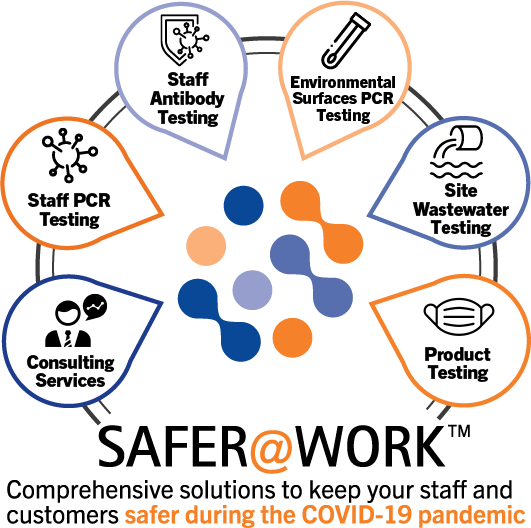
“Sales figures nosediving?“
“Let’s get in a lead generator.”
We’ve all been here before. The sales pipeline is looking a little anaemic, and, as a small company, you can’t afford a dedicated sales team. Someone in a meeting will absolutely inevitably say “Let’s find a lead generator.”
This is seen as the easiest way to find opportunities – well, if you’ve got no exposure to how Sales work, it is, anyway. In actual fact, you are more than likely to waste a lot of time and money for very few, if any, real results. And here’s why.
It’s not quite that simple.
Here’s the theory. Find a lead generator on the internet. Linkedin. Fiverr. Freelancer dot com. Throw them some money, come back in a week or month, leads generated.
In reality, no leads generated in 90 percent of the cases, or leads which, on closer inspection, aren’t leads at all. No clear record of work in terms of mails sent out or calls made. Time and money down the drain.
Why ?
Lead generation is, most of the time, seen as a low skill profession. Really, getting any lead is a numbers game, so any lead generator will spend the bare minimum of time in contacting people to reach as many as possible. If you’re trying to sell technical IT services, then you need someone who has an insight into who buys tech software, why they buy it and what the signs are that they’re actually interested. In other words, to get accurate data back, you need someone who can do a “deep dive” rather than a surface skim.
You’ve probably gone for the cheapest, reliable looking contractor available. Guaranteed failure, I’m afraid. You might actually strike lucky and get someone who genuinely puts the effort in without any real understanding, but after a week or so of bombarding uninterested prospects with mails and calls, most external lead generators will have given up and will be watching daytime TV, taking your hourly rate, falsifying all the data and getting the excuses ready for that Friday Zoom catch up call.
Using overseas contractors
Talking of “hourly rate.” Most people looking for some form of external contractor will naturally gravitate to the cheaper end of the market – India, the Philippines etc. Your hourly rate of £5 may not seem to be a lot, but it actually is in those parts of the world. The average office worker in India earns £150 per month, and it’s £250 a month in the Philippines.
At £5 an hour, you’re paying them £750 a month. You will be strung along until you pull the plug on them. Unsurprisingly.
No one in the UK is going to say to anyone who with an Indian accent who cold calls them, “Ah yes, actually, we were thinking of buying a new Finance system this year.” Nor are they going to respond to any badly written e mails from someone with a non English sounding name. They literally get sheaves of them every day.
Using UK contractors
Well, much the same, but with a higher basic rate plus greater expectations around commission. “Ah” you might say, “but with a greater chance of success.” Possibly. If their lead generation experience doesn’t extend past getting people to change their mobile phone provider, that is. Check.
“Have you done IT lead generation before ?” is also not useful if you’re selling something incredibly technically complicated and difficult to either explain or comprehend.
Payment
Let’s add another layer of complexity. The above supposes that you’re (unwisely) paying someone an hourly rate. You might think, well, to keep them working, you can bring in an incentive in the form of commission. “Extra £20 per lead, target of five leads per week.”
Watch the floodgates open. Having worked as part of a Sales team for many, many years, I can tell you exactly what will happen. Your external lead generators will produce utter crap. I’ve seen sales blokes put leads through when they’ve talked to the receptionist, or been told that the company uses “Finance System X”, so ! “Well, they could use a second finance system in parallel” or “Yes, we probably integrate with Unix” when “no we don’t” would have been more truthful. But. Lead. Few quid. Better class of sandwich at lunchtime as a result.
£20 to someone in India surpasses the cost of a better lunchtime sandwich.
Really, any honest Sales Manager or Director will tell you that perhaps 80% of all sales leads aren’t actually leads. They’re figures to show to the Board which suggests they’re doing the job properly.
By waving a big carrot under the nose of an overseas lead generator, you also imply there’s a big stick, “hit the target or else.” They’ll hit the lead total target, but…. you’ll get rubbish back. Guaranteed.
Interpreting leads
Now it gets complicated. Referring to the first paragraph here, “If you’re a small company and can’t afford a Sales team” implies that you don’t have any exposure to the way Sales works.
You’ve probably read on the internet that leads are either “qualified” or “unqualified”. In other words, they’re leads – or not leads – depending on a set of rules you apply to them. There’s a theory based on a number of criteria with the acronym BANTE –
Budget
Authority
Need
Time
Existing system
Hit all the existing criteria and it’s a strong lead. Hit some of them and you can essentially put the lead on the back burner and come back to it later.
However. Even with a fully qualified lead, there is a problem with interpretation. If you have no experience of Sales and can’t actually read people, you might misinterpret the “lead” as well, with an attendant wild goose chase. This is especially true if you’re trying to discuss the lead via phone – very few people out there have can actually get into the head of someone they’re not physically talking to, face to face. It’s estimated that 1% of the population can actually interpret someone’s actual intentions in a non facing environment.
So, perversely, you employed someone as you didn’t have a dedicated Sales team, and now you need Sales skills to interpret the results.
One example – some companies will undertake “what if” exercises – they’ll take you all the way up to the point of a sale, see how much discount they could squeeze out of you then disengage. Nasty old world, isn’t it ? Your time costs them nothing.
There are plenty of other examples, but essentially you need to have put the years into talking to decision makers to see it all coming.
Exclusivity
There’s a further problem – your external telemarketers, all that distance away, may try and sell the lead they’ve generated to someone else. This is absolutely endemic in the industry and you will be powerless to even detect it, let alone do anything about it.
It’s completely understandable. If you’re in the Third World and there’s a chance for you to make £50 by ringing up a few web development agencies and say “I’ve been speaking to a company in the UK who want a new website… ”
Occasionally, I’ve seen leads being offered where the poster has confused the CC and BCC and you discover that the lead is being offered to 40 or 50 companies. Non exclusive leads are worth nothing, to be honest. The difficulty is always going to be ensuring that these leads are, indeed, exclusive to you, otherwise all you’ve done is expended money to make life more difficult for yourself.
Other classic mistakes include….
Scripts and follow up mails
Oh, God. If you take one thing away from this, it’s don’t use scripts. Ever. Seriously. Nothing will make a potentially interested client put a phone down faster than someone reading robotically off a script and then being incapable of deviation or asking pertinent questions. “Hello, I’m an idiot.”
Follow up mails. Equally don’t. Current (incorrect) thinking is “Send out mail. Wait for reply. No reply after a week, send out second mail. Bit more direct this time. No reply again ? Third mail, let’s keep in touch.”
They won’t, they had no interest in the first mail. You’ve probably been mail filtered and have wasted a lot of time following up people who aren’t interested. Mail someone else instead.
E mail marketing is a black art, and you can automate everything nowadays. With something so inefficient…. automate it. Don’t pay someone to do it all manually.
Data
Of course, there’s the question of “who are your lead generators going to call ? ” This tends to get forgotten. You can either provide a list (which, with no sales experience, you may not have the insight to correctly assemble) – that costs time and money and you may as well cherry pick a lot of it and contact them yourself – or you can get the contractor to use their own list.
They’ve probably got their own list, it may or may not be appropriate, and they’ve probably mailed everyone on it thirty times already for other campaigns. They certainly won’t have the experience to cherry pick the most likely companies, if you haven’t. Which is why you don’t pay by the hour.
I’ve done lead gen, and was given idiotic lists by Marketing – “ring everyone on it.” “What ? 36,000 calls ? For £100k systems ? Including this petrol station in Wales and a chip shop ? What are they going to do with a Business Intelligence system ?”
Data quality and relevance is a whole subject in itself. Not one to discuss here.
Conclusions
It ain’t, unfortunately, as easy as it first appears.
If I was going to come to some conclusions, they’d be –
(1) Steer clear of contractors, especially overseas ones, unless they come with an infallible pedigree and recommendations.
(2) Pay the money and use a reputable firm instead. There’s lots out there. No, I don’t mean the ones who mail me every day to say “We can get you 50 – 350 leads a month !” – they can’t.
(3) Again, check the pedigree of the firm. Have they run campaigns like this before ? Has the individual lead generator got specific experience in IT related subjects ?
(4) Ensure you explain the campaign very carefully and that the correct knowledge is there to do it. Plus “attitude”. High level decision makers do not appreciate pushy sales calls. Anyone working on a commission basis or tasked with making large numbers of calls or sending out dozens of mails will, by nature, be pushy.
(5) Make sure you run short contracts – a week or so – at first – and that they produce meaningful results. Check the “leads” by ringing the people involved to confirm details.
(6) Don’t obsess over call time, number of calls made, number of mails sent out. The only important metric is the results. Be realistic, based on your short campaigns, about what is achievable. Otherwise, you’ll just pressure your lead generators and you’ll get increasing amount of crap back.
(7) Content. Simplest is best. No one reads three paragraph intro mails. No deal will be lost if you used a full colon instead of a semicolon. No one is bothered about your corporate logo.
(8) Be aware that almost no leads materialise out of thin air immediately. In most cases, your decision maker will have an intention, or possible intention, even, to look at something “within six months.”
(9) USE A CRM SYSTEM he said, in block capitals, to record leads. Leads are gold dust. Make sure you follow up when the time is right. Assume, in the interim, that other competitors might be speaking to them as well, if the opportunity you’ve discovered is, say, six months away. Take nothing for granted.
(10) Bear in mind that lead generation is just one facet of your sales outreach. There are plenty of other methods you can use. Keep a close eye on your budget versus results and don’t be tempted to say “Let’s give it another month” if it’s not working.
Hope all this helps, and before you mail me, noooo, I don’t do lead generation. hello@davefrancisconsulting.com







